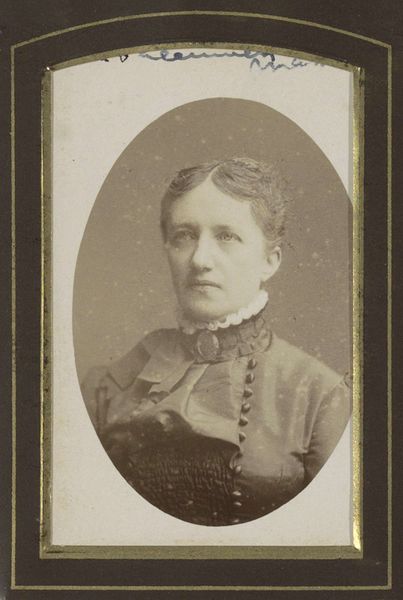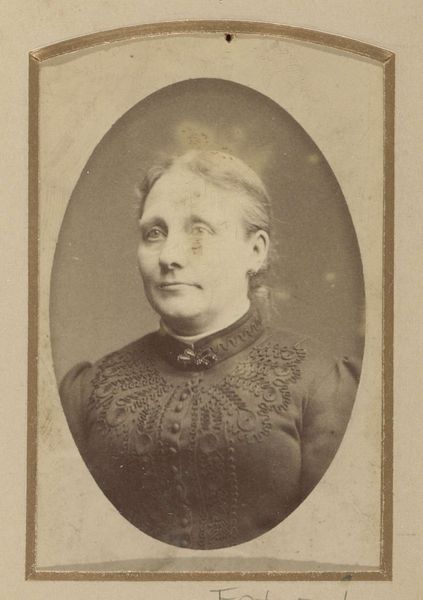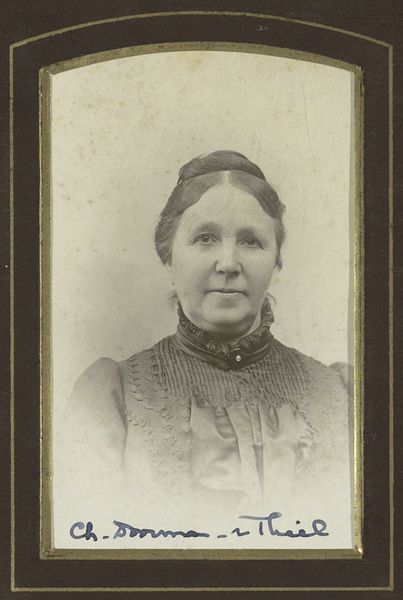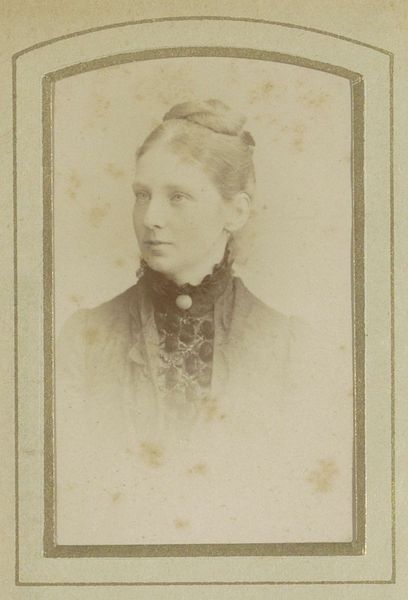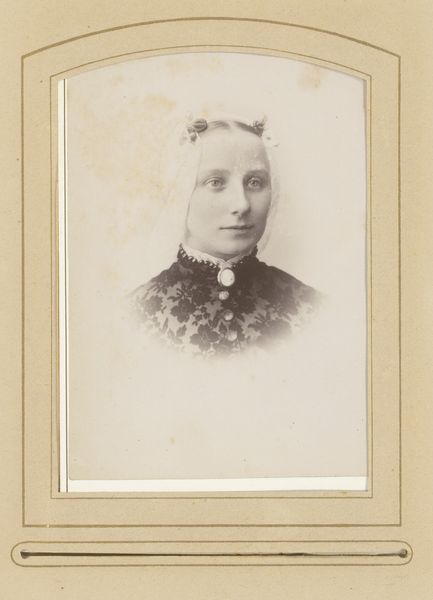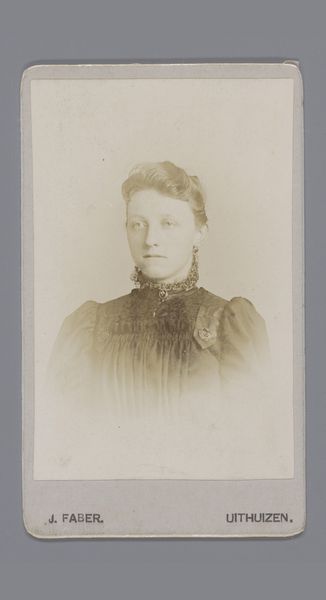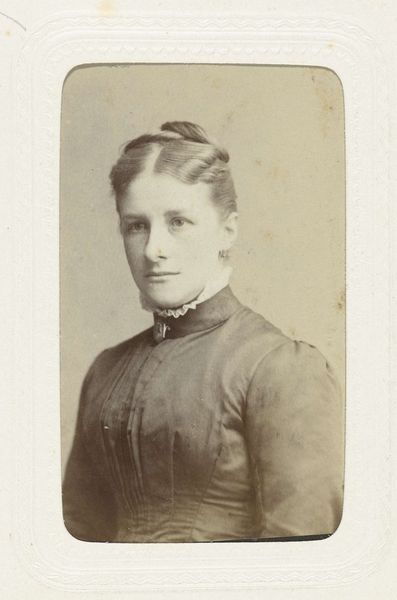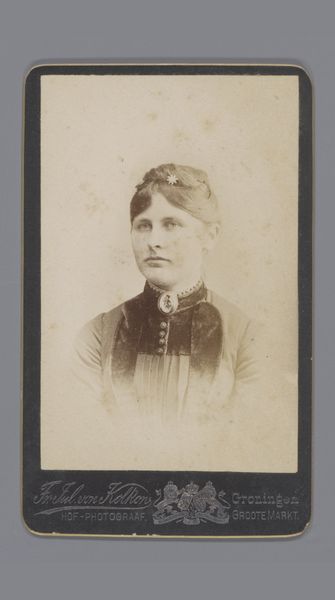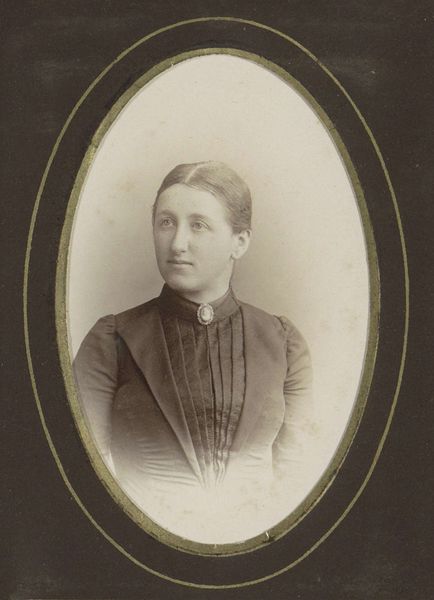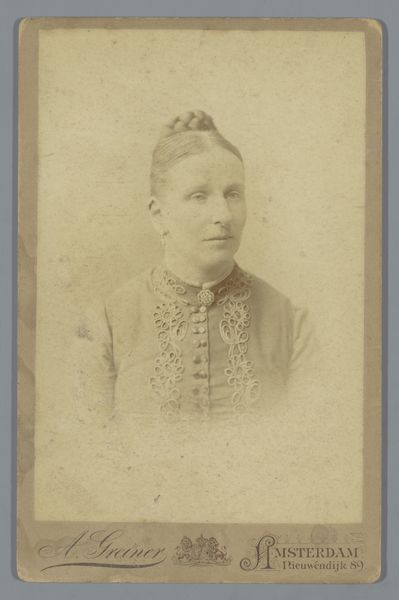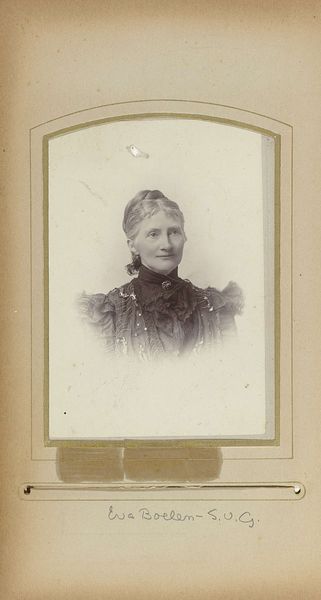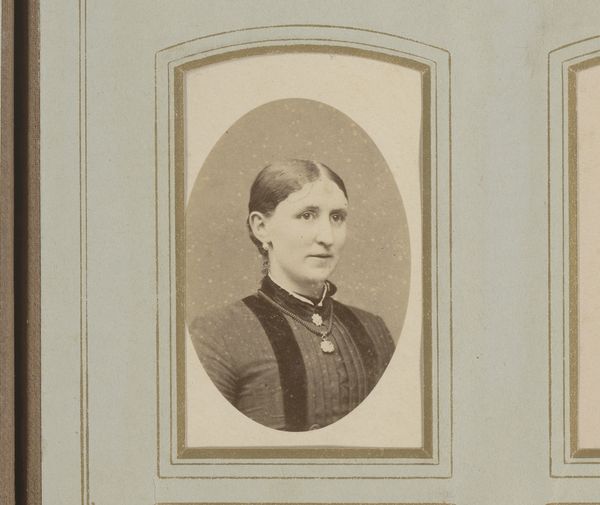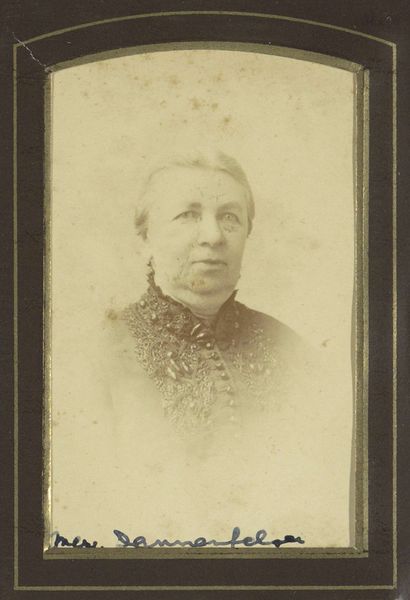
photography
#
portrait
#
photography
#
portrait reference
#
19th century
#
portrait drawing
Dimensions: height 98 mm, width 64 mm
Copyright: Rijks Museum: Open Domain
Curator: What immediately strikes me about this photograph, titled “Portret van Christine Doorman-Van Thiel,” circa 1873-1886, is the sitter's poised stillness. There’s a muted serenity in her gaze, a delicate yet present strength. Editor: My eye goes directly to the brooch and the tiny decorative elements down the front of her high-necked dress. The light seems to settle on those details in a really tactile way. This highlights labor invested into these sorts of adornments and subsequently this signals the level of upper middle-class prosperity on display. Curator: Indeed. Let’s consider the historical context. In the late 19th century, photography was increasingly accessible to the middle classes, serving as a means of constructing and preserving social identity. The photograph serves not only as an individual depiction, but a tool for solidifying class and gender roles. Do you see how she fulfills the expectations of womanhood during the late 1800s? Editor: Absolutely. The materiality tells us a lot. This would have been a substantial item to produce back then – to say nothing of how it represents the industry of formal photography itself. You get a real sense of craft, the way the image is toned and mounted. This wasn't mass-produced the way a cell phone image is now, it took dedicated physical materials to bring this photograph into existence. Curator: Precisely. The photographic process itself underscores the power dynamics at play, as the subject had to hold still to meet technical needs. But the subject wasn’t powerless. As someone in a privileged societal role, Christine clearly asserted agency through clothing choices, creating her visual identity. Her dress, for instance, seems to whisper aspirations rather than shout statements. Editor: And how! The material considerations reveal those choices, that self-construction in material form – dress, brooch, hairstyle, each item signifying specific codes, meanings produced through workshops, industry, consumption… Curator: Well said! Looking at “Portret van Christine Doorman-Van Thiel,” it invites us to see art not just as a single aesthetic endeavor, but within systems of culture, gender, and identity. It’s through material production of the final photographic object, in connection to class and society that an intersectional visuality truly emerges. Editor: For me, examining its tactile, industrial genesis expands our appreciation for the material networks embedded in even a single photograph.
Comments
No comments
Be the first to comment and join the conversation on the ultimate creative platform.
